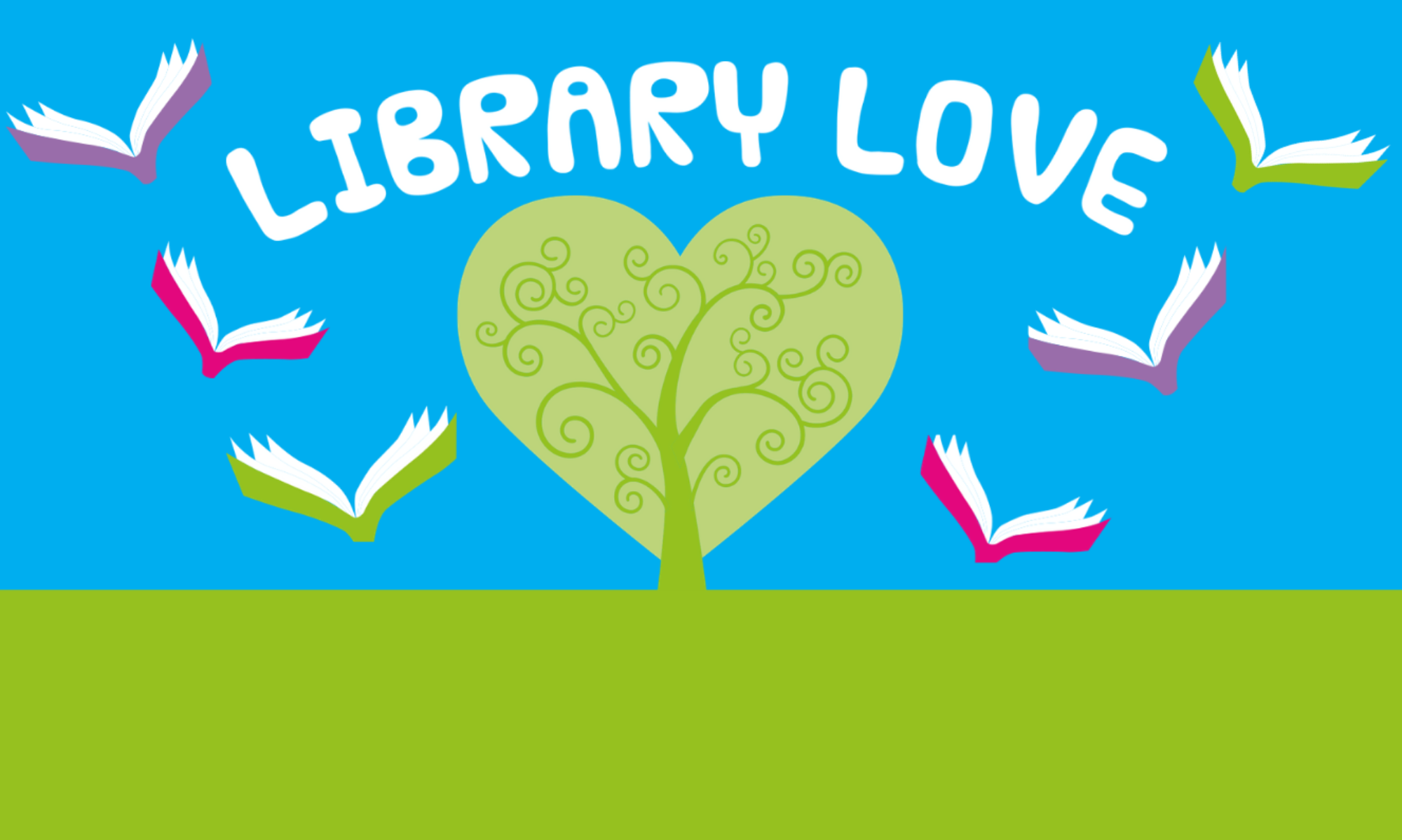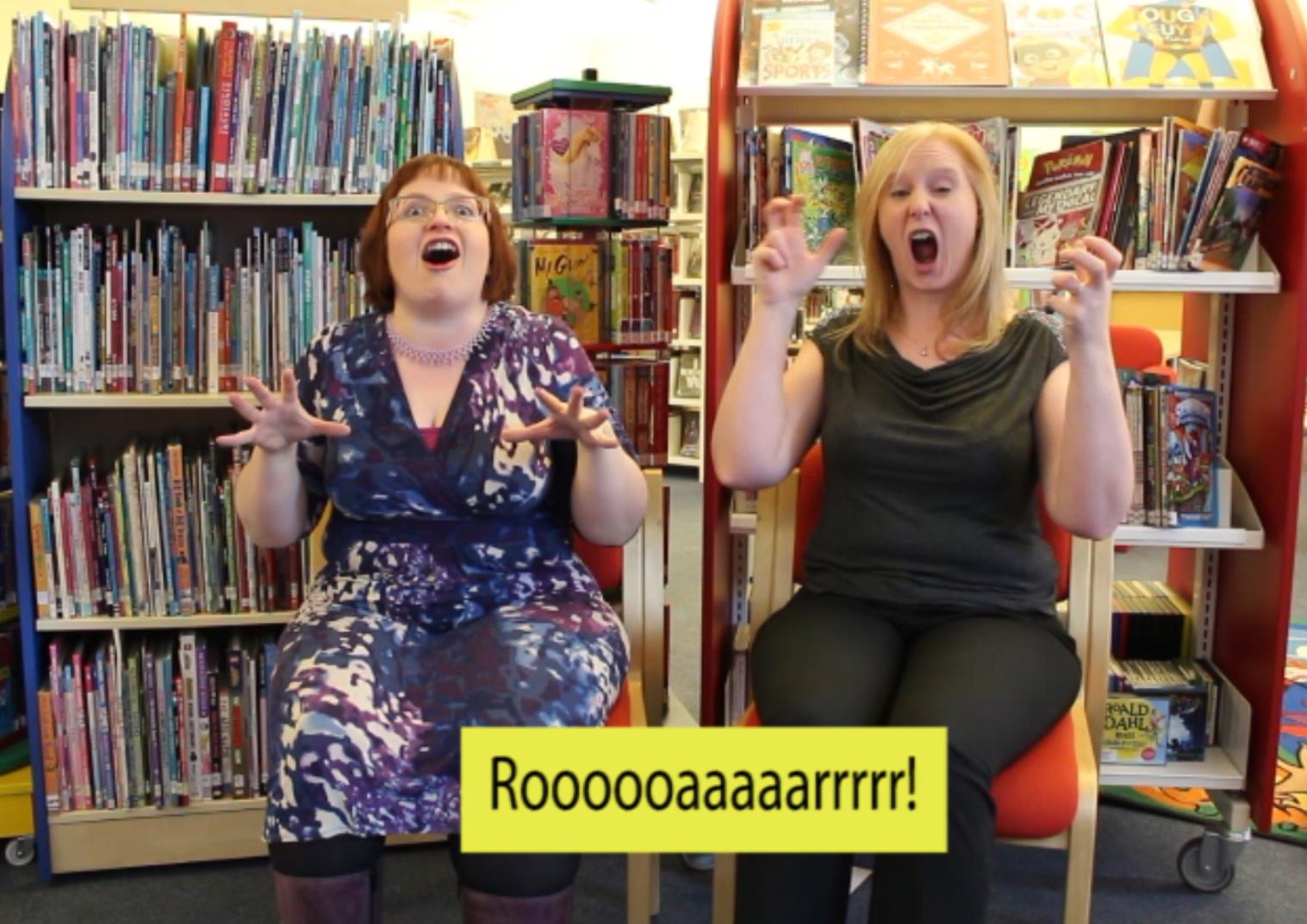We’ve recently created a series of five short videos which each have me (Tanya) reading a picture book and then singing a nursery rhyme with a BSL (British Sign Language) interpreter beside me signing along and subtitles at the bottom. These videos are for people to be able to share the joy of picture books with their children – whether they or their children are D/deaf* or hearing.
The videos are all held on the Falkirk Libraries You Tube channel
- My humongous hamster by Lorna Freytag
- A puppy’s tale by Alan Windram and Chloe Holwill-Hunter
- Captain Crankie and Seadog Steve by Vivien French and Alison Bartlett
- The giant who snored by Mike Nicholson and Amy Lewis
- Mac and Bob – the party problem by Alan Windram and Dave Sutton
Why? One of the things I (Tanya) love most is to read picture books to children. They respond with so much excitement and happiness to the fun stories and gorgeous pictures that are found there. I’ve been reading picture books at Bantaskin Primary in Falkirk for some time now and I’ve been lucky enough to have some wonderful BSL (British Sign Language)using teachers and support staff from Windsor Park School for the Deaf to interpret for me when I’m reading picture books in class to pupils who use BSL. It works really well – everyone in class can enjoy it (hearing and D /deaf) and experience the fun and excitement of books.
As part of my work in Falkirk Libraries, I think up ideas for videos and podcasts that can help to share a flavour of what our library service does. We want people to know that we have beautiful, exciting books; fun storytimes, author visits and other events; friendly, knowledgeable, enthusiastic staff; and a huge desire to share the joy of books and libraries to as many people as possible. I want everyone to feel welcome into our libraries, and I want everyone to feel that we have something for them.
So, I started thinking about how story reading with a BSL interpreter worked for both hearing and D/deaf children. Then I thought about the fact that many D / deaf children can have either D/deaf or hearing parents and that many D/deaf parents can have either D/deaf or hearing children. I want parents and children who are D/deaf to feel welcome in the library and I want to share the joy of picture books with everyone. We’ve had events in the past where Deaf parents of hearing children have come along to Bookbug sessions and we’ve employed a BSL interpreter to come along too – but these times are few and far between and have been instigated by the parent asking us if it was possible – we want to tell as many people as possible that we’re here for everyone.
How? We contacted the publishers of some of our favourite picture books and asked if we could record their books with BSL interpreting and put them on YouTube. Some publishers have not got back to us yet, but lovely Little Door Books and Piccadilly Press said yes. We also spoke with our colleagues at Falkirk Council’s Social Work Department who were happy to pay for a BSL interpreter for the project. So, we had a selection of books that we sent to our interpreter, Linda Mackenzie, along with some songs and rhymes. Linda came along to Bonnybridge Library for the recording and talked with us about which rhymes and picture books would and wouldn’t work – we did have a picture book that Floris publishers had kindly said we could use, but Linda felt it would be a very difficult one to sign along with, so we left it and focused on easier to use books for our first try. We recorded me reading and Linda signing, then Naomi (our library video guru) played back the video for Linda to check that the signing was at the right speed, we re-recorded a couple of books as the reading and signing had got out of synch. Finally, Naomi edited the videos and added in subtitles and pictures from the books, as well as information about us and the books.
What next? We’re going to tell as many people as possible, to share our love for books far and wide. Hopefully, we can produce some more BSL picture book videos in the next few months. Let us know what you think and, if you like them, then please, share the videos as widely as you can
*I’ll use the term D / deaf as it is preferred by many people. This is a great explanation of Deaf / deaf from SignHealth:
“The word deaf is used to describe or identify anyone who has a severe hearing problem. Sometimes it’s used to refer to people who are severely hard of hearing too.
We use Deaf with a capital D to refer to people who have been deaf all their lives, or since before they started to learn to talk. They are pre-lingually deaf.
It’s an important distinction, because Deaf people tend to communicate in sign language as their first language. For most Deaf people English is a second language, and understanding complicated messages in English can be a problem.
There is a very strong and close Deaf community with its own culture and sense of identity, based on a shared language.”

